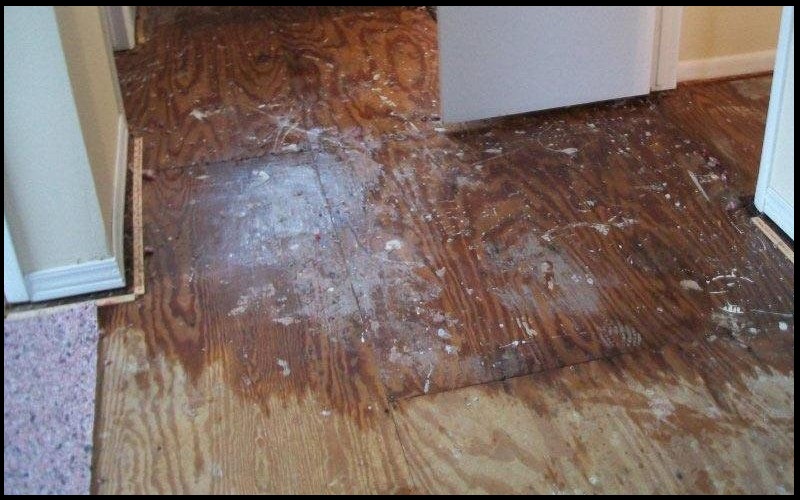When water shows up where it shouldn’t, speed and clarity matter. The right water damage restoration partner protects your building, budget, and timeline. This guide teaches you how to vet water restoration companies in North Indianapolis so you can approve an estimate with confidence—without the sales fluff.
Why choosing well matters:
Water damage is common: roughly 1 in 60 insured homes files a claim for water or freezing each year. That makes your selection more than a one-off decision—it’s risk management.
Mold is the other reason to move quickly. If wet materials aren’t dried within 24–48 hours, mold can start. That two-day window should guide every early decision, from leak control to drying targets.
What good looks like (Education checklist):
Use these five questions to separate true pros from “truck and a fan” operations:
- IICRC certified? Ask whether the team follows the ANSI/IICRC S500 standard for professional water damage restoration. You don’t need a textbook answer—just a clear process for inspection, drying goals, documentation, and safety.
- Written scope (what’s in/out). You want a room-by-room scope with materials, equipment counts (air movers, dehumidifiers), daily monitoring visits, debris removal, and any tear-outs. Clarity up front avoids surprise add-ons later.
- Moisture map + daily logs. Pros create a simple floor plan marking wet areas and record readings until materials hit target levels. This proves the building is truly dry and helps with insurance.
- Containment + HEPA when needed. For sewage, mold, or dusty demo, expect plastic containment, negative air, and HEPA filtration to prevent cross-contamination.
- Insurance, warranty, change-order rules. Ask to see general liability and workers’ comp; for contaminated water, ask about pollution liability. Clarify how unexpected findings are priced and approved, and what the workmanship warranty covers.
Move fast, but in the right order (Prevention mindset)
- Fix the leak first. Stop the source before anything else.
- Start drying within 24 hours. Stabilization the same day is ideal; full drying should follow without delay.
- Add leak detectors/shutoff valves. Small devices prevent big losses in the future.
- Maintain gutters, sump, and roof. Exterior water management keeps basements and first floors safer.
- Know your main water shutoff + keep a vendor list. Minutes matter in an emergency.
How to compare water restoration companies:
Ask each bidder for the same structure:
- Scope & exclusions. What rooms, materials, and tasks are included? What’s not?
- Equipment plan. Counts and estimated days on site.
- Monitoring cadence. How often will they check moisture and adjust equipment?
- Containment plan. When will containment and HEPA be used, and how will they clear the area before teardown?
- Documentation. Photos, moisture logs, and itemized invoices suitable for carriers (important for agents and adjusters).
- Schedule. Start date, daily work hours, and projected completion (critical for businesses to reduce downtime).
- Compliance. How they handle potential lead/asbestos triggers during demo in older buildings (schools, HOAs, multifamily, and medical offices should ask this directly).
For a step-by-step project outline you can compare against estimates, see the local Water Damage Restoration page.
Day-one expectations from a quality water damage restoration service,
- Safety + source control within the first visit.
- Extraction of standing water and protection of contents.
- Strategic equipment placement based on building materials and airflow—not just “more fans.”
- Moisture mapping and written drying goals you can understand.
- Clear updates on next steps, access, and noise for tenants, customers, or staff.

What about insurance?
Homeowners policies generally cover sudden and accidental water events (burst pipes), but not gradual leaks or ground flooding, which usually need separate flood coverage. This is one reason documentation from your water remediation company matters.
Examples by audience:
- Homeowners: Ask for a simple moisture log and photo set for your claim; confirm re-cleaning if residues remain.
- Business owners: Request phased work so critical areas keep operating; confirm after-hours options.
- Property managers: Require tenant notices, signage, and end-of-day cleanup standards.
- Realtors/investors: Get a realistic finish date so closings and turnarounds stay on track.
FAQs:
Q1: How fast should a team respond?
A: Same-day stabilization is best; aim to begin drying within 24 hours to reduce mold risk and costs.
Q2: How long does structural drying take?
A: Most light to moderate jobs dry in 3–5 days with proper equipment and daily adjustments; hardwood and complex assemblies can take longer.
Q3: What should be on a complete estimate from a water remediation company?
A: Source control, extraction, equipment counts with estimated days, moisture map, daily logs, debris handling, and any repairs or referrals listed separately.
Q4: Is everything covered by insurance?
A: Usually not. Sudden/accidental events are often covered; long-term leaks and external flooding often aren’t. Ask your agent and keep your documentation tight.
Bottom line:
Pick a water damage restoration partner that shows you the plan, proves the dry-down with data, and communicates clearly. If a detail is vague—scope, containment, schedule, or warranty—get it clarified before you sign. That one step saves time, money, and stress.


